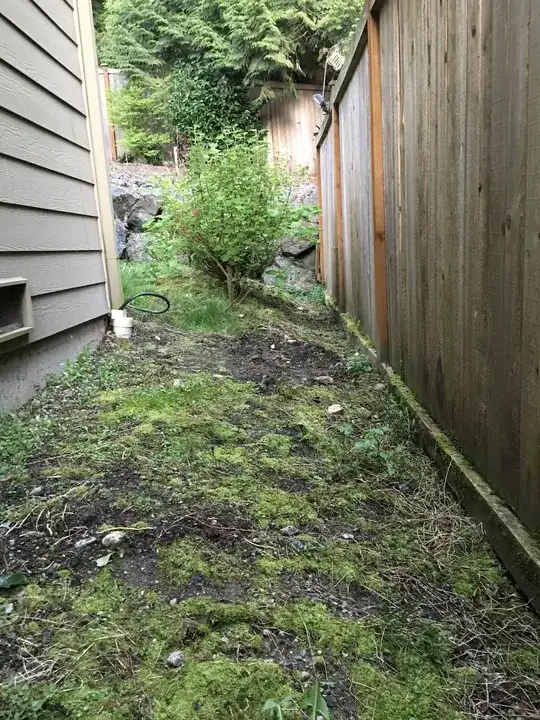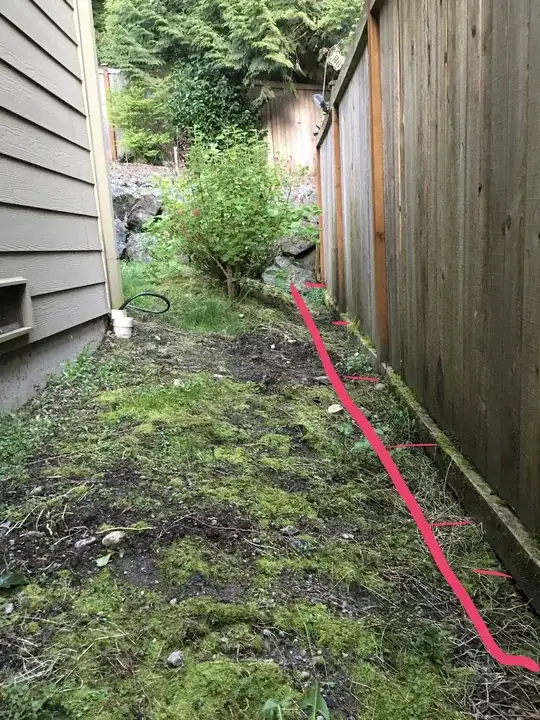I agree with Roxy this would be the optimal way. However, I see several problems with that approach - 1) it's relatively difficult to build a decent wall without removing the fence boards. You just don't have a lot of space to work in. 2) I'd want to check with the neighbors as this will likely not only affect the plantings on their side, but also the way the wall looks. As they say - great fences make great neighbors.
What I would do is to dig a trench about 4" below the bottom rail. If possible, try to keep the soil under the fence no more than an 1" below the fence line. Use 1/4" minus gravel (sometimes called paver base) to fill the bottom 2" of the trench (make sure to compact it well), then build a interlocking wall about an 1" from the fence. Use Roxy's idea of a ground contact 2x to cover the crack (these are the boards with the little slits in them). A 2x6 is great, but a 2x4 would work just as well. I would recommend treating the cut end of the 2x with the appropriate wood preservative to help prolong the life of the board.
For the wall, I like to use Roman Stack stone because the units are relatively small / lightweight, and the wall can go upto 2' in height. Home Depot carries the grey version in most of their stores (at least in the Metro Seattle area). Mutual Material carries a larger color pallet and actually manufactures the block.
The biggest thing to keep in mind is that both soil and concrete/brick walls that contact the wood greatly increase the rate of rot, especially in the Northwest will all our damp weather.

